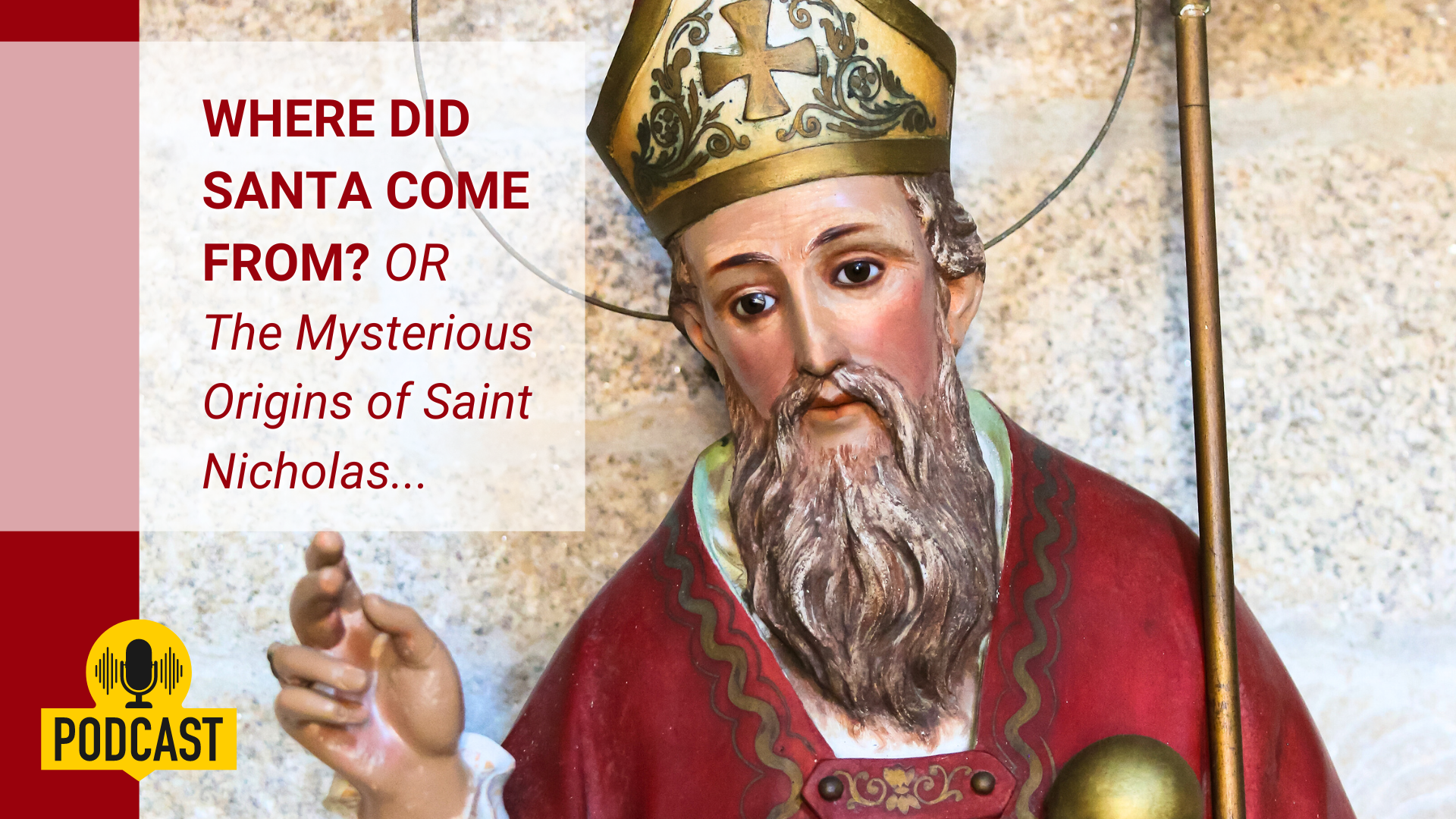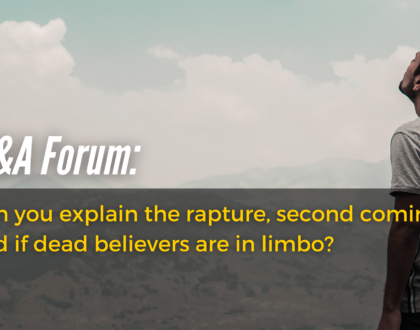Where Did Santa Come From? Or, The Mysterious Origins of Saint Nicholas

by Westminster
When most people think about Christmas they also think about Santa Claus, the jolly red-suited man who magically brings gifts to children on Christmas Eve.
But where did he come from? Has he always been associated with Christmas? And is it true that he is based on a man named Saint Nicholas?
Let’s begin with Nicholas.
Right out of the gate we should note that it is notoriously hard to find information about Nicholas which is historically accurate. There are legends and stories, but it’s hard to distinguish between the myth and the man.
There was indeed a man named Saint Nicholas. Apparently he was holy from the time he was a boy. According to one story (which is surely legendary), he entered a church one morning to pray and was asked who he was. In response, he said: “Nicholas, the sinner.” There is a stained-glass window dated to the 12th century which depicts an infant Nicholas refusing to drink from his mother’s breast on Wednesdays and Fridays. This was supposed to be an indication of his desire to fast even from youth.
He grew up to become a church leader (a bishop) in Myra (modern day southwest Turkey) and served in that capacity in the early 4th century. He was also known to have worked miracles. He apparently saved three sailors from death near the Mediterranean coast, and even resurrected three boys after they were killed by a butcher!
Nicholas perhaps suffered torture and imprisonment for his faith under the Roman Emperor Diocletian. If that is true it tells us that he was no pushover. (You don’t tend to endure torture for something you don’t believe strongly about.)
He is also said to have attended the famous Council of Nicea (325 A.D.) where he defended the divinity of Jesus. Some people say he even punched his chief opponent Arius in the face! He was going to be punished for this outburst, but other bishops are said to have received a vision of Jesus. They took this to mean that they should let Nicholas off the hook.
By the 6th century, Nicholas had become very popular as a Saint. (In the Bible, the word ‘saint’ simply means a believer in Christ, but in the Roman Catholic church it came to refer to someone who is most certainly in heaven and whose life should be imitated.) But why was his example to be emulated? Probably because he held fast to the truth about Jesus, but also because of something to do with his character—and this is where his connection to Christmas may become clearer.
Nicholas was said to be charitable. He had a concern for the well-being of others (Arius notwithstanding), especially for the poor. According to one story, there were three young girls who were at risk of sliding into prostitution because of their desperate and impoverished situation. So he gave them each a stocking full of gold as a dowry so they could avoid the sex market.
I’ve also heard that he helped poor children in general by giving out coins. Over time, individuals and families started to put an empty boot or a stocking outside their door hoping he would fill them with money or gifts. They did this around December 6th which was the day people had earmarked to remember him. (Empty stockings waiting to be filled… sound familiar?)
Okay, having reached back into the fog of the past we can tentatively conclude that Nicholas was a Christian who became a priest, and eventually the bishop of Myra. He perhaps suffered for his faith and maybe attended the Council of Nicea. He became known for his generosity, and his popularity grew over time.
Let’s jump ahead several centuries.
Different countries have developed different traditions related to a man giving gifts close to Christmas. I won’t go into all of that here. But in order to see the connection to Saint Nicholas I should point out that in the seventeenth century Dutch settlers came to North America and brought their traditions with them. One of them included “Sinterklaas.” Soon the name was English-ized into Santa Claus. If you say “Sinterklaas” or “Santa Claus” three times fast you can hear how it sounds like “Saint Nicholas.”
So Santa Claus is, for some people, the modern remembrance of Saint Nicholas who most likely gave out presents (originally to the poor) to share and show the love of Christ.
But the modern Santa didn’t become famous overnight. That took time and was aided along by a number of events, including a poem called ‘Twas the Night Before Christmas.’ It was written by Clement Clarke Moore. He based his description of Santa Claus not only on the Saint, but on a handyman he knew in New York who used a sleigh.
Faith, generosity, gifts for children, stockings, December, sleigh… Do you see how the different weaves are coming together?
Over time, the profile of Santa grew. This process was surely helped by Coca-Cola advertising campaigns through the 1900’s.
Today, not only is Nicholas often associated with Christmas, but Roman Catholics continue to recognize him as the patron saint of sailors, repentant thieves, children, and pawnbrokers.
Up until quite recently, Santa was also used to motivate children to behave. There was a moral dimension to Santa. After all, you would only get gifts if you were on the nice list. But who honestly thinks that Santa is only coming for the benefit of nice kids anymore? It’s basically a free for all—as long as your family can afford to do some shopping.
Despite these traditions and stories, we need to be clear that the modern Santa Claus (to most people) has little to do with Christ or Christianity. Instead, he has become a giver of gifts who “sees you when you’re sleeping.” (I think that part is kind of creepy, but maybe that’s just me.)
To many people, perhaps including you, Santa has become a reminder not of Christ but of consumerism. It would most likely upset the original Nicholas. Richard Mouw describes the experience of a man who was visiting Tokyo close to Christmas. In a department store, someone had displayed something which I would call grossly offensive. It was Santa nailed to a cross!1 In doing this, not only had they removed Christ from Christmas, but they had replaced him with a modern symbol of consumerism. That is, of course, an extreme example of things going off the rails. But it hangs as a warning to us all.
Let’s keep Santa where he belongs: on the sidelines. Whenever he comes up (or slides down), perhaps we can use him as an opportunity to talk about a real person named Nicholas who served God, defended the faith, and was generous to the poor.
Even though it’s hard to know much about the historical Saint Nick, he would definitely have agreed with the angels’ song in Luke 2:14: “Glory to God in the highest, and on earth peace, good will toward men.”
Merry Christ-mas!
Recommended Posts

Can you explain the rapture, second coming, and if dead believers are in limbo? (Blog version)
March 20, 2025

2 tips for personal peace in a new year
January 02, 2025
